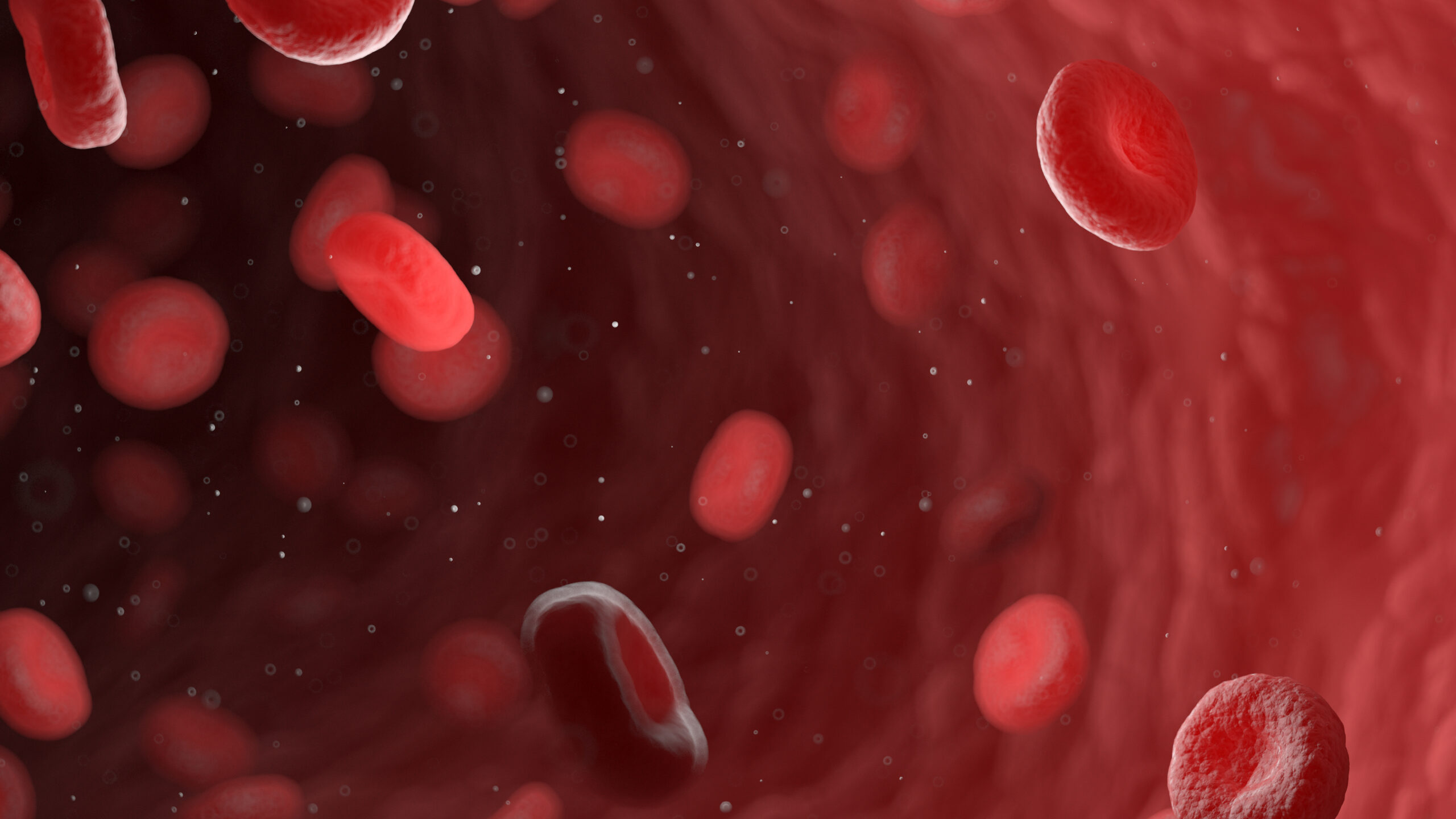What is a migraine?
A migraine is a type of headache characterized by severe, throbbing or pulsating pain, often concentrated on one side of the head. Migraines can be extremely debilitating and may last for hours or even days. They are often accompanied by other symptoms, such as nausea, vomiting, and sensitivity to light, sound, or smells.
Migraine attacks can be triggered by various factors, including stress, hormonal changes, lack of sleep, certain foods, alcohol, and caffeine. The exact cause of migraines is not fully understood, but they are thought to involve abnormal activity in the brain, as well as genetic and environmental factors.
There are two main types of migraines: migraine without aura and migraine with aura. A migraine without aura is the most common type and occurs without any warning signs. A migraine with aura is preceded by visual, sensory, or motor disturbances (known as aura) that typically last for a short time before the headache begins.
How exactly does a migraine occur?
While the exact mechanisms behind migraines are not fully understood, researchers believe that migraines result from a complex interplay of genetic, environmental, and neurochemical factors. Several theories have been proposed to explain the occurrence of migraines, with the most widely accepted one being the “neurovascular theory.” According to this theory, migraines involve both neurological and vascular changes in the brain.
Here are some key components of the migraine process, based on the neurovascular theory:
- Triggers: Factors such as stress, hormonal changes, sleep disturbances, certain foods, alcohol, or caffeine can initiate a cascade of events in the brain, leading to a migraine.
- Cortical spreading depression (CSD): This is a wave of electrical activity that moves across the brain’s cortex, causing a temporary disruption of normal brain function. CSD is thought to be responsible for the aura experienced by some migraine sufferers.
- Activation of the trigeminovascular system: As CSD spreads, it activates the trigeminovascular system, which is a network of neurons that innervate the blood vessels in the brain’s outer covering (the meninges). This activation leads to the release of inflammatory substances such as calcitonin gene-related peptide (CGRP) and substance P, which cause blood vessels to dilate and become inflamed.
- Pain signaling: The inflammation and dilation of blood vessels stimulate nerve fibers in the trigeminovascular system, which then send pain signals to the brainstem and higher pain processing centers in the brain, ultimately resulting in the perception of pain.
- Central sensitization: Prolonged activation of the trigeminovascular system can cause the central nervous system to become more sensitive to pain, leading to increased migraine severity and duration.
Migraines are a complex condition, and ongoing research continues to explore the various factors and mechanisms involved in their occurrence.
What symptoms do patients experience with a migraine?
Migraine symptoms can vary among individuals and may differ between migraine attacks. Common symptoms experienced by patients during a migraine include:
- Moderate to severe headache: The headache is often described as throbbing or pulsating and is typically concentrated on one side of the head, although it can sometimes affect both sides or alternate between sides.
- Sensitivity to light, sound, and smells: Migraine sufferers may find bright lights, loud noises, or strong odors particularly bothersome during an attack, sometimes exacerbating the headache.
- Nausea and vomiting: Many people with migraines experience nausea, and some may also vomit.
- Aura: Some migraine sufferers (around 20-30%) experience an “aura” before the headache begins. Auras are transient neurological disturbances that can manifest as visual, sensory, or motor symptoms. Common visual auras include seeing flashing lights, zigzag lines, or blind spots. Sensory auras can involve tingling or numbness in the face or extremities, and motor auras may cause temporary muscle weakness or difficulty speaking.
- Fatigue and dizziness: Migraine sufferers may feel tired, weak, or dizzy during or after an attack.
- Neck stiffness or pain: Stiffness or pain in the neck and shoulders can be associated with migraines.
- Difficulty concentrating or focusing: Cognitive impairment, such as trouble thinking clearly or problems with memory, can occur during a migraine.
- Mood changes: Patients may experience mood changes before, during, or after a migraine, such as irritability, anxiety, or depression.
- Increased urination: Some people may experience an increased need to urinate during a migraine.
It’s important to note that not all migraine sufferers will experience all these symptoms, and the severity and duration of symptoms can vary greatly between individuals and attacks.
How is a migraine diagnosed?
Diagnosing a migraine typically involves a thorough evaluation by a healthcare professional, as there is no specific test to definitively diagnose the condition. The process usually includes the following steps:
- Medical history: The healthcare professional will gather information about the patient’s personal and family medical history, focusing on the patient’s headache history, symptoms, frequency, duration, and any potential triggers.
- Physical and neurological examination: A physical examination is conducted to assess the patient’s overall health and identify any potential underlying conditions that may be causing the headaches. A neurological examination may also be performed to evaluate the patient’s nervous system function, looking for signs of any issues that could be contributing to the headaches.
- Headache diary: Patients may be asked to keep a headache diary, in which they record details about their headaches, such as the timing, severity, accompanying symptoms, and potential triggers. This information can help the healthcare professional better understand the patient’s headache patterns and identify any factors that could be contributing to the migraines.
- Diagnostic criteria: Healthcare professionals often use established diagnostic criteria, such as the International Classification of Headache Disorders (ICHD), to determine whether a patient’s symptoms are consistent with a migraine diagnosis. These criteria outline specific symptoms, frequency, and duration requirements for different types of migraines.
- Ruling out other conditions: In some cases, additional tests may be ordered to rule out other conditions that could be causing the headaches or to identify any underlying health issues that may be contributing to the migraines. These tests can include blood tests, imaging studies (such as MRI or CT scans), or lumbar punctures (spinal taps).
It’s important to note that diagnosing migraines can be challenging, as symptoms can overlap with those of other headache disorders or medical conditions. A thorough evaluation by a healthcare professional is essential for an accurate diagnosis and appropriate treatment plan.
What is the treatment for a migraine?
Migraine treatment aims to alleviate symptoms, reduce the frequency and severity of attacks, and improve the patient’s overall quality of life. Treatment approaches can be divided into two main categories: acute (abortive) treatment and preventive (prophylactic) treatment.
- Acute (abortive) treatment: This type of treatment is taken during a migraine attack to relieve symptoms and stop the migraine from progressing. Acute treatments include:
- Over-the-counter (OTC) pain relievers: Nonsteroidal anti-inflammatory drugs (NSAIDs) like ibuprofen, aspirin, or naproxen can help alleviate mild to moderate migraine pain. Acetaminophen may also be used. However, frequent or excessive use of these medications can lead to medication-overuse headaches or other side effects.
- Triptans: These prescription medications, such as sumatriptan, rizatriptan, and zolmitriptan, are specifically designed to treat migraines. They work by constricting blood vessels and blocking pain pathways in the brain.
- Ergotamines: Ergotamine-containing medications, such as ergotamine tartrate or dihydroergotamine, are used to treat severe migraines that have not responded to other treatments. They constrict blood vessels and can help alleviate migraine pain.
- Anti-nausea medications: These medications, such as metoclopramide or prochlorperazine, can help manage nausea and vomiting associated with migraines.
- Lasmiditan: This is a newer class of migraine-specific medication that works by activating serotonin receptors in the brain and is used for the acute treatment of migraines.
- Preventive (prophylactic) treatment: This type of treatment is taken regularly to reduce the frequency and severity of migraine attacks. Preventive treatments may be recommended for patients who experience frequent or particularly debilitating migraines. Some options include:
- Blood pressure medications: Beta blockers (e.g., propranolol, metoprolol) and calcium channel blockers (e.g., verapamil) can be effective in migraine prevention.
- Antidepressants: Certain antidepressants, such as amitriptyline or venlafaxine, can help prevent migraines by influencing the levels of brain chemicals involved in pain regulation.
- Antiepileptic drugs: Some antiepileptic medications, like topiramate or valproate, have been found to be effective in migraine prevention.
- Botox injections: OnabotulinumtoxinA (Botox) injections have been shown to be effective in preventing chronic migraines in some patients.
- CGRP inhibitors: Calcitonin gene-related peptide (CGRP) inhibitors, such as erenumab, fremanezumab, or galcanezumab, are a newer class of preventive migraine medications that block the action of CGRP, a molecule involved in migraine pain.
- Lifestyle modifications: In addition to medications, lifestyle changes can play an important role in migraine management. These may include:
- Identifying and avoiding triggers: Keeping a headache diary can help patients identify and avoid specific factors that may trigger their migraines.
- Maintaining a regular sleep schedule: Establishing consistent sleep patterns can help reduce the frequency of migraines.
- Managing stress: Practicing relaxation techniques, such as deep breathing, meditation, or yoga, can help reduce stress and potentially prevent migraines.
- Regular exercise: Engaging in regular physical activity may help reduce the frequency and intensity of migraines.
- Staying hydrated and eating regular meals: Dehydration and irregular eating patterns can contribute to migraines, so it’s essential to stay hydrated and maintain a regular eating schedule.
- Limiting caffeine and alcohol intake: Excessive caffeine or alcohol consumption can trigger migraines in some individuals, so moderation is key.
It’s important to note that migraine treatment is highly individualized, and what works for one person may not be effective for another. A healthcare professional will work with the patient to develop a tailored treatment plan that addresses their specific needs and circumstances. Regular follow-up appointments may be necessary to monitor the effectiveness of the treatment and make adjustments as needed.
What are the typical outcomes for migraine treatment?
The outcomes of migraine treatment can vary significantly among individuals, depending on factors such as the severity and frequency of migraines, the specific treatments used, and the patient’s adherence to the treatment plan. Some typical outcomes for migraine treatment include:
- Symptom relief: Acute (abortive) treatments aim to provide rapid relief from migraine symptoms, such as pain, nausea, and sensitivity to light and sound. While these treatments can be effective for many patients, they may not completely eliminate symptoms in all cases, and their effectiveness can vary between migraine attacks.
- Reduced frequency and severity: Preventive (prophylactic) treatments and lifestyle modifications can help reduce the frequency and severity of migraine attacks for many patients. The degree of improvement can vary, with some patients experiencing a significant reduction in migraines, while others may only see a modest improvement.
- Improved quality of life: Successful migraine treatment can lead to a better overall quality of life for patients, as they may be able to function better during daily activities, experience less disability, and have improved mental health.
- Treatment adjustment: Migraine treatment often requires ongoing monitoring and adjustment to find the most effective approach for each patient. It’s not uncommon for patients to try multiple medications or therapies before finding the best combination for their individual needs.
- Potential side effects: Some migraine treatments can have side effects, which may range from mild to severe. Patients and healthcare professionals must work together to balance the potential benefits of treatment with the risks of side effects.
It’s important to recognize that migraine treatment outcomes can be highly variable, and what works for one person may not be effective for another. Treatment plans should be tailored to the individual, and regular communication with healthcare professionals is essential for monitoring progress and making adjustments as needed.
What questions should I ask my doctor if I’m diagnosed with migraines?
If you have been diagnosed with migraines, it’s essential to have a clear understanding of your condition and the available treatment options. Here are some questions you might consider asking your doctor:
- What type of migraine do I have? Understanding whether you have migraines with or without aura, or another type of migraine, can help you better manage your condition.
- What could be triggering my migraines? Identifying potential triggers can help you take steps to avoid or minimize them and reduce the frequency of your migraine attacks.
- What acute (abortive) treatments are available for my migraines, and which would you recommend for me? Discussing the available medications and their potential side effects can help you and your doctor find the most appropriate treatment for your specific situation.
- Do you think preventive (prophylactic) treatment would be beneficial for me? If you experience frequent or severe migraines, preventive treatments may be an option to discuss with your doctor.
- What lifestyle changes can I make to help manage my migraines? Understanding how factors like sleep, stress, diet, and exercise can influence your migraines can help you develop strategies to minimize their impact.
- How can I track my migraines and their triggers? Your doctor can provide guidance on maintaining a headache diary or using mobile apps to record information about your migraine attacks, which can be useful in identifying patterns and managing your condition.
- What should I do if my migraines change in frequency, severity, or symptoms? Understanding when to contact your doctor for changes in your migraine patterns can help ensure you receive appropriate care and treatment adjustments.
- Are there any support groups or resources available for people with migraines? Connecting with others who have migraines can provide valuable information, coping strategies, and emotional support.
Remember that open communication with your healthcare provider is essential for effectively managing your migraines. Don’t hesitate to ask any additional questions or raise concerns as they arise, and be sure to keep your doctor informed about any changes in your migraine symptoms or the effectiveness of your treatment plan.




